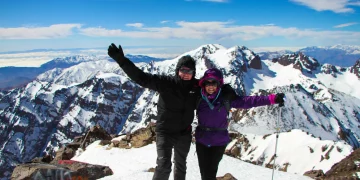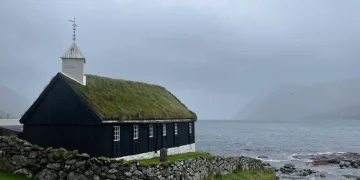The History and Significance of Semana Santa in Spain
Semana Santa, or Holy Week, is one of Spain’s most significant and widely celebrated religious festivals. This week-long event marks the final days of Lent and culminates in Easter Sunday, which commemorates the resurrection of Jesus Christ. The celebration of Semana Santa is deeply rooted in Spain’s Catholic tradition and is a vital part of the nation’s religious and cultural heritage. Its origins date back to the Middle Ages when the Catholic Church sought to bring the story of Christ’s passion, death, and resurrection to life through religious plays and processions.
The term “Semana Santa” translates directly to “Holy Week” in English, but the festivities are far more than just a spiritual observance. Semana Santa in Spain is a combination of solemnity, tradition, and community spirit, with towns and cities across the country coming together to commemorate the sacred events of the final days of Christ’s life. The rituals, processions, and celebrations during Semana Santa evoke powerful emotions and are a means of personal reflection and religious devotion.
In Spain, Semana Santa is not just a religious event but also a cultural and social phenomenon. It represents a unique blend of faith, art, music, and tradition. Throughout the country, people come together to witness and participate in dramatic processions, where penitents, adorned in traditional robes and conical hoods, carry statues of the Virgin Mary and Jesus Christ through the streets. These processions are rich in symbolism, with each step taken representing a moment in the Passion of Christ.
Throughout the centuries, Semana Santa has evolved, with each region and city adding its own unique customs and characteristics to the celebrations. In some parts of Spain, the processions are grand spectacles with ornate floats, while in others, the focus is on simplicity and quiet devotion. No matter the region, however, Semana Santa is a time of reverence and reflection, uniting communities through faith and tradition.
Top Cities to Visit: Seville, Malaga, and Granada
While Semana Santa is celebrated across Spain, three cities stand out as the most famous and important centers for the festivities: Seville, Malaga, and Granada. These cities offer a combination of historical significance, vibrant celebrations, and spiritual experiences, making them the perfect destinations for those wanting to immerse themselves in the unique atmosphere of Semana Santa.
- Seville
Seville, located in southern Spain, is arguably the most famous city for Semana Santa celebrations. The city’s Semana Santa is known for its grandeur, emotional intensity, and deep-rooted traditions. During the week, Seville’s streets are filled with stunning processions that feature elaborate floats (known as “pasos”), which are carried by teams of men called “costaleros.” These floats depict scenes from Christ’s Passion, including his suffering, death, and resurrection. The statues of the Virgin Mary and Jesus are often beautifully adorned with flowers and candles, adding to the solemn and devotional atmosphere of the processions.
One of the most iconic elements of Seville’s Semana Santa is the “Hermandades” or brotherhoods, which are religious groups responsible for organizing and participating in the processions. These brotherhoods have existed for centuries and are an essential part of the city’s religious identity. The processions are meticulously planned and are accompanied by mournful music played by brass bands, which further enhance the emotional experience. The Semana Santa of Seville is a feast for the senses, with the sights, sounds, and smells of the festival leaving a lasting impression on visitors.
Key processions in Seville include the “La Macarena” procession, which carries the statue of the Virgin Macarena, and the “El Gran Poder” procession, featuring a statue of Christ. Visitors flock to Seville during Semana Santa to witness these iconic events and participate in the city’s rich religious and cultural traditions.
- Malaga
Malaga, also located in southern Spain, is another city where Semana Santa is celebrated with great fervor. Known for its lively atmosphere and deeply rooted religious customs, Malaga’s Semana Santa is a colorful and dramatic event. Unlike the more somber processions of Seville, Malaga’s celebrations feature larger-than-life floats that are often carried through the streets by numerous participants. The floats are adorned with intricate religious imagery and are usually followed by a large crowd of devotees.
The processions in Malaga are known for their intense energy, with participants, known as “nazarenos,” marching in unison while carrying candles and religious symbols. Malaga’s Semana Santa is characterized by its sense of community and togetherness, with families and friends coming together to honor their faith and share in the spirit of the occasion. The processions are also accompanied by traditional music, including the sounds of marching bands, which add to the festive atmosphere.
One of the highlights of Semana Santa in Malaga is the “La Pollinica” procession, which marks the beginning of the Holy Week celebrations. This procession features a statue of the Virgin Mary carrying the child Jesus, symbolizing his triumphal entry into Jerusalem. Another major procession is the “El Cautivo,” which features a statue of Christ and is one of the most emotional and moving processions of the entire week.
- Granada
Granada, located in the region of Andalusia, is known for its beautiful landscapes and rich cultural heritage, making it a perfect backdrop for Semana Santa celebrations. While Granada’s Semana Santa celebrations are not as large as those in Seville or Malaga, they are deeply spiritual and rooted in tradition. The city’s unique atmosphere—combining Islamic, Jewish, and Christian influences—adds a layer of complexity to the religious observance of Holy Week.
The processions in Granada are more intimate and quieter compared to those in Seville and Malaga, but they are no less moving. The city’s narrow streets and historical architecture create a dramatic setting for the religious processions, where penitents march through the streets, often with their faces covered, in a show of personal devotion. The “La Quinta Angustia” procession is one of the highlights of Granada’s Semana Santa, featuring a striking image of the Virgin Mary mourning the death of her son, Christ.
Granada’s Semana Santa is also known for its connection to the Alhambra, the city’s iconic fortress and palace. The breathtaking views of the Alhambra and the surrounding mountains provide a stunning backdrop for the processions, making Granada’s celebrations unique in their scenic beauty.
Religious Rituals and Processions During the Week
Semana Santa is marked by a series of elaborate and deeply religious rituals and processions. Each day of Holy Week is dedicated to a specific event in the Passion of Christ, and the processions reflect these events through symbolic acts and displays.
- Palm Sunday (Domingo de Ramos)
The week begins with Palm Sunday, which commemorates Jesus’ triumphant entry into Jerusalem. In Spain, this is marked by the blessing of palm branches and olive branches, which are carried by participants in processions. The most iconic procession on Palm Sunday is the one in Seville, where “La Borriquita” procession features a statue of Jesus riding a donkey, symbolizing his humble arrival in Jerusalem. - Maundy Thursday (Jueves Santo)
On Maundy Thursday, the focus shifts to the Last Supper and the institution of the Eucharist. In Seville, the “La Cena” procession takes place, featuring a float depicting the Last Supper. This procession is significant because it marks the beginning of the most intense period of Semana Santa, where the processions continue late into the night. - Good Friday (Viernes Santo)
Good Friday commemorates the crucifixion of Jesus Christ. The processions on this day are somber and emotional, as participants reflect on Christ’s suffering and sacrifice. One of the most powerful processions on Good Friday is the “El Gran Poder” procession in Seville, which features a statue of Christ carrying the cross. - Easter Sunday (Domingo de Resurrección)
Easter Sunday celebrates the resurrection of Christ. In Spain, this is a day of joy and celebration, with processions that are more festive in nature. The “La Resurrección” procession in Seville marks the culmination of the week, featuring the image of the resurrected Christ.

Understanding the Spiritual Connection Between Locals and the Festival
Semana Santa is more than just a public celebration for the people of Spain; it is a deeply personal and spiritual event. For many locals, the processions and rituals represent an opportunity for reflection, penance, and devotion. The processions are often seen as a way to express one’s faith and connect with the divine.
For participants, especially the “costaleros” who carry the heavy floats, there is a sense of personal sacrifice and devotion. The long hours of carrying the floats through the streets in silence or singing religious hymns is considered an act of worship and spiritual reflection. Many participants in the Semana Santa processions believe that their involvement is a way of honoring God and the Virgin Mary, and it is seen as a deeply meaningful tradition that has been passed down through generations.
The strong sense of community that emerges during Semana Santa is also integral to the festival’s significance. Families and neighborhoods come together to participate in the processions, reinforcing bonds of solidarity and faith. For many, Semana Santa is a time for personal renewal, a chance to reflect on their relationship with God and the importance of spiritual values.
Practical Tips for Attending Semana Santa Processions
Attending Semana Santa processions in Spain is a memorable and moving experience, but it requires some preparation. Here are a few practical tips to ensure you get the most out of your experience:
- Arrive Early
Semana Santa processions can get very crowded, especially in popular cities like Seville and Malaga. Arriving early to secure a good viewing spot is essential if you want to fully enjoy the processions. The processions can last for several hours, so having a comfortable place to stand or sit is key. - Respect the Traditions
Semana Santa is a deeply religious event, so it’s important to approach the processions with respect and reverence. Dress modestly and remain quiet during the processions to allow others to participate in the spiritual experience. - Wear Comfortable Shoes
You’ll likely be walking and standing for extended periods of time, so it’s important to wear comfortable shoes. The cobblestone streets in cities like Seville and Granada can be difficult to navigate, so sturdy footwear is essential. - Plan for Crowds
Semana Santa is one of Spain’s most popular festivals, so be prepared for large crowds. If you’re attending the processions in a major city, expect plenty of people, and be patient as you make your way through the streets. - Book Accommodations Early
Hotels and accommodations can fill up quickly during Semana Santa, so it’s best to book your stay well in advance. This will ensure that you have a place to rest after a long day of sightseeing and processions.
Conclusion
Semana Santa is a unique cultural and religious event that offers visitors an unparalleled opportunity to experience Spain’s deep spiritual and artistic traditions. From the majestic processions in Seville to the intimate rituals in Granada and Malaga, Semana Santa is an extraordinary celebration of faith, community, and devotion. Whether you’re drawn to the religious significance, the breathtaking processions, or the cultural heritage of Spain, Semana Santa is a festival that will leave a lasting impression and a deeper understanding of Spain’s religious and cultural identity.





















